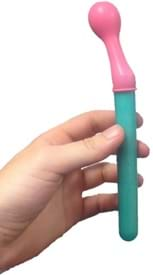Quick Look
Grade Level: Middle school
Time Required: 45 minutes
Expendable Cost: US $2.00
Group Size: 3
Subject Areas: Biology, Life Science, Science and Technology
Introduction
Bolded words are vocabulary and concepts to highlight with students during the activity.
Students act as environmental engineers involved with the cleanup of a toxic spill. Using bioremediation as the process, students select which bacteria they will use to eat up a spilled pollutant. Students learn how engineers use bioremediation to make organisms degrade harmful chemicals. Engineers must make sure these "good" bacteria have everything they need to live so they can degrade contaminants for bioremediation to occur. Students learn about the needs of living things by setting up an experiment with yeast. 
Supplies
Each group needs:
- 2 plastic spoons
- 4 small balloons
- 4 test tubes
- 2 tbsp. yeast
- 2 tbsp. sugar
- water
- vinegar (can be shared among class)
- salt (can be shared among class)
- 1 roll of masking tape (can be shared among class)
Subscribe
Get the inside scoop on all things TeachEngineering such as new site features, curriculum updates, video releases, and more by signing up for our newsletter!Procedure
Procedures Overview
Students have test tubes containing a toxic contaminant: sugar! They use yeast to remove this contaminant and turn it into harmless CO2 . The goal is to create the optimum conditions in which yeast can thrive and happily devour the contaminant.
Procedure
In test tubes, sudents mix the contaminant (sugar) with yeast and other chemicals of their choosing. Then they "collect" the gas that is produced by the yeast in a balloon that is stretched over the top of the test tube.
- Explain to groups that they get four test tubes in which to do their tests. In each of the tubes, they place the same amount of sugar, about ⅓ teaspoon (see image). Tell them to be sure to use the same spoon for measuring the sugar and the yeast so that there is no contamination of the chemicals.

- Of the four tubes, one must be the control: the sugar is mixed with just water with a balloon placed over the top to see what, if any, gas is released when no yeast is present. The other three test tubes are for varying the yeast's environment.
- Divide the class into teams of three students each.
- Instruct groups to discuss the conditions they want to expose their yeast to through their experiments. They can use hot or cold water, vinegar, salt, or any combination of these.
- Pass out supplies. Tell students to check that their balloons are not stuck together at the neck.
- In the three remaining tubes, students use equal parts of sugar and yeast to keep their samples consistent with each other. The procedure for preparing the tubes is as follows:
- Using masking tape, label the test tube with mixture content (that is, sugar, yeast, cold water).
- One student puts ⅓ teaspoon sugar in the test tube, along with salt (if they wish to test using salt); do not add the yeast. If no salt is desired, skip to the next step.
- Fill the test tube half full with a liquid of choice (hot water, vinegar plus hot water, cold water, etc.).
- Place thumb over the top of the tube and shake it to dissolve the sugar in the liquid.
- Add ⅓ spoon yeast to the test tube; quickly stretch the balloon over the top.
- Place thumb over the top of the test tube (bending the balloon), and shake it to mix the solution.
- It takes about 10 minutes to notice results; note the time the yeast is added so that 10 minutes can be calculated.
- Swirl or gently shake each test tube, as needed, during the 10 minutes.
- After the full 10 minutes, students should note the size of the balloons.
- As a class, discuss which conditions resulted in the most sugar being "eaten" and broken down to make CO2 (as indicated by the balloon size)?
Wrap Up - Thought Questions
- What chemicals/conditions helped your yeast? Why?
- What chemicals/conditions prevented your yeast from breaking down the sugar? Why?
- How is this similar to cleaning up a toxic spill in the real world?
More Curriculum Like This

Students learn about a special branch of engineering called bioremediation, which is the use of living organisms to aid in the clean-up of pollutant spills. Students learn all about bioremediation and see examples of its importance. In the associated activity, students conduct an experiment and see ...

Students act as environmental engineers involved with the clean up of a toxic spill and use the bioremediation as the process to select which bacteria they will use to eat up the pollutant spilled. Students learn about the needs of living things by setting up an experiment with yeast.

Students explore an important role of environmental engineers—cleaning the environment. They learn details about the Exxon Valdez oil spill, which was one of the most publicized and studied human-caused environmental tragedies in history.
Copyright
© 2013 by Regents of the University of ColoradoLast modified: May 12, 2022








User Comments & Tips